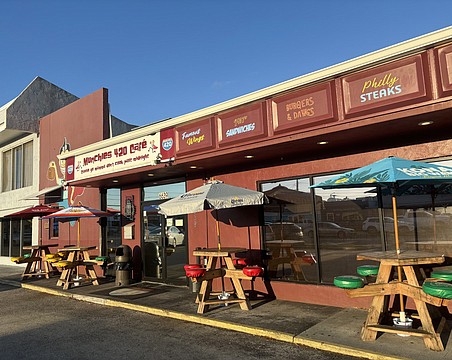REVIEW SUMMARY
Industry. Banking
Trend. Charters formed in the last few years appear to be faring better than those around for awhile.
Key. Real estate lenders remain in morning-after mode.
By the Numbers. Click here for ROE and ROA charts. Click here for assets and net income charts.
There's a simple reason many of the Gulf Coast region's newer banks are faring better than their well-established counterparts so far this year. They missed the party in the latter half of the last decade, therefore they aren't nursing the hangover.
Only a third of the locally based banks showed positive return on both assets and equity through the first quarter of 2010, according to data from the Federal Deposit Insurance Corp., though at least half showed marked improvement from the same period last year.
Bankers say much of the improvement can be attributed to shoring up balance sheets, adding to loan-loss reserves or simply declining any more new loans.
“We didn't have a lot of business to start with, so we don't have problems now,” says Joe Caballero, who recently completed his first year as president and CEO of GulfShore Bank, a 2007 South Tampa startup that led the entire Gulf Coast with 4.5% greater ROA year over year. Rather than giving the bank's new management credit, he attributes the better performance more to timing and increased revenue.
While the single-branch bank is still effectively operating in the red, its quarterly losses have stemmed through the first quarter and GulfShore's assets reached the $100 million mark in the second quarter, according to Caballero, who was previously in executive positions in Tampa with Bank of America and Florida Bank. The milestone was achieved through sound underwriting policies and procedures, he says, though that hasn't been the reason his peers have taken a tumble in recent years.
“A lot of banks had prudent underwriting,” he says. The biggest problem was that few banks really planned for the severe downturn in real estate, including value losses of 30% to 40%, he says.
Three-year binge
Big-bank observers say while the well-performing rookie institutions were still building capital, established institutions were practically throwing money at any real estate development, in particular suburban residential projects and downtown condominium towers.
Most of those developments are now subject to bankruptcies and foreclosures, jeopardizing many of those participating banks.
“The banks that jumped into real estate in 2005, 2006 and 2007 are paying for it in 2008, 2009 and 2010,” says Brian Keenan, president and CEO of Fifth Third Bank in downtown Tampa. Commercial real estate is the biggest burden for banks currently, trailing the slight improvement residential sales are starting to show, he says.
Banks with strong capital positions, such as Fifth Third, are returning to lending mode after a virtual freeze that lasted practically the duration of 2009, Keenan says. “We did a lot of things preemptively and pro-actively to straighten out our balance sheet,” he says. “We're operating more on offense now than on our heels.”
It may also be getting easier for younger, smaller banks to get new infusions of capital. For example, Bay Cities Bank, a 10-year-old Tampa-based institution with six offices, raised $21 million this past spring shortly after reaching $500 million in assets. Bay Cities posted a 3.6% yearly gain in ROA through the first quarter, FDIC figures show.
Greg Bryant, Bay Cities president and CEO, says current and new investors have a better understanding of what the business-centered bank is about. “The reason banks are having such a hard time raising money,” he says, “is because investors aren't sure what they're getting.”
Trying again
Some banks have had to try new capitalization strategies after original plans fell apart. The Palm Bank, which opened in 2003, had struck a deal for new capital from a group of private investors headed by Marty Adams, former president and COO of Huntington Bancshares Inc., which previously had a strong presence in Florida.
After Adams' group withdrew its offer, which was perceived as a takeover attempt, Palm launched another effort in May to generate lending capital, says Chris Anderson, the bank's president and CEO. Palm posted an ROA decline of nearly 3% in the first quarter.
Among banks with more substantial declines in ROA for the first quarter, Republic Bank of New Port Richey was highest with a loss of almost 21% year over year, followed by Bank of Florida's two regional subsidiaries in Naples (-10.8%) and Tampa (-6.7%).
Both those Bank of Florida's subsidiaries, along with a third in Fort Lauderdale, became the latest banking casualties May 28 after failing to raise $72 million in capital to satisfy federal regulators. The 13 bank failures in Florida so far this year is one short of matching the total of 14 that were shut down statewide throughout 2009.
Plume wary
More banking trouble could be on the Gulf Coast's horizon, literally, in the form of the massive oil leak from BP's rig off the coast of Louisiana.
Local bankers say it is too soon to tell how much the spill in its current form will hurt coastal customers, and eventually those inland, though they are watching their colleagues in the Florida Panhandle where oil has already washed ashore.
An analysis by CoStar Group finds that coastal properties could fall off another 10% over the next three years as a result of the BP disaster, with losses possibly totaling $4.3 billion along the 600-mile stretch from the Louisiana bayous to Clearwater Beach. “It's just another blow to an already depressed real estate market,” Norm Miller, CoStar vice president of analytics, told Bloomberg News.
Brian Keenan of Fifth Third Bank, which has no branches in the state's northwest stretch, notes that banks involved in beachside hotels and restaurants will be the most vulnerable to the spill in upcoming quarters. He says his bank is already measuring risk impact to determine how much they would be affected if the oil plume eventually reaches this region.
ROA WINNERS AND LOSERS
Winners
GulfShore Bank, Tampa +4.5%
American Momentum Bank, Tampa +4.2%
TCM Bank, Tampa +4.0%
Bay Cities Bank, Tampa +3.6%
Sabal Palm Bank, Sarasota +3.4%
Losers
Republic Bank, New Port Richey -20.8%
Bank of Florida, Naples* -10.8%
Southern Commerce Bank, Tampa -6.9%
Bank of Florida, Tampa* -6.7%
First Commercial Bank, Tampa -3.6%
* Closed May 28, Source: FDIC






